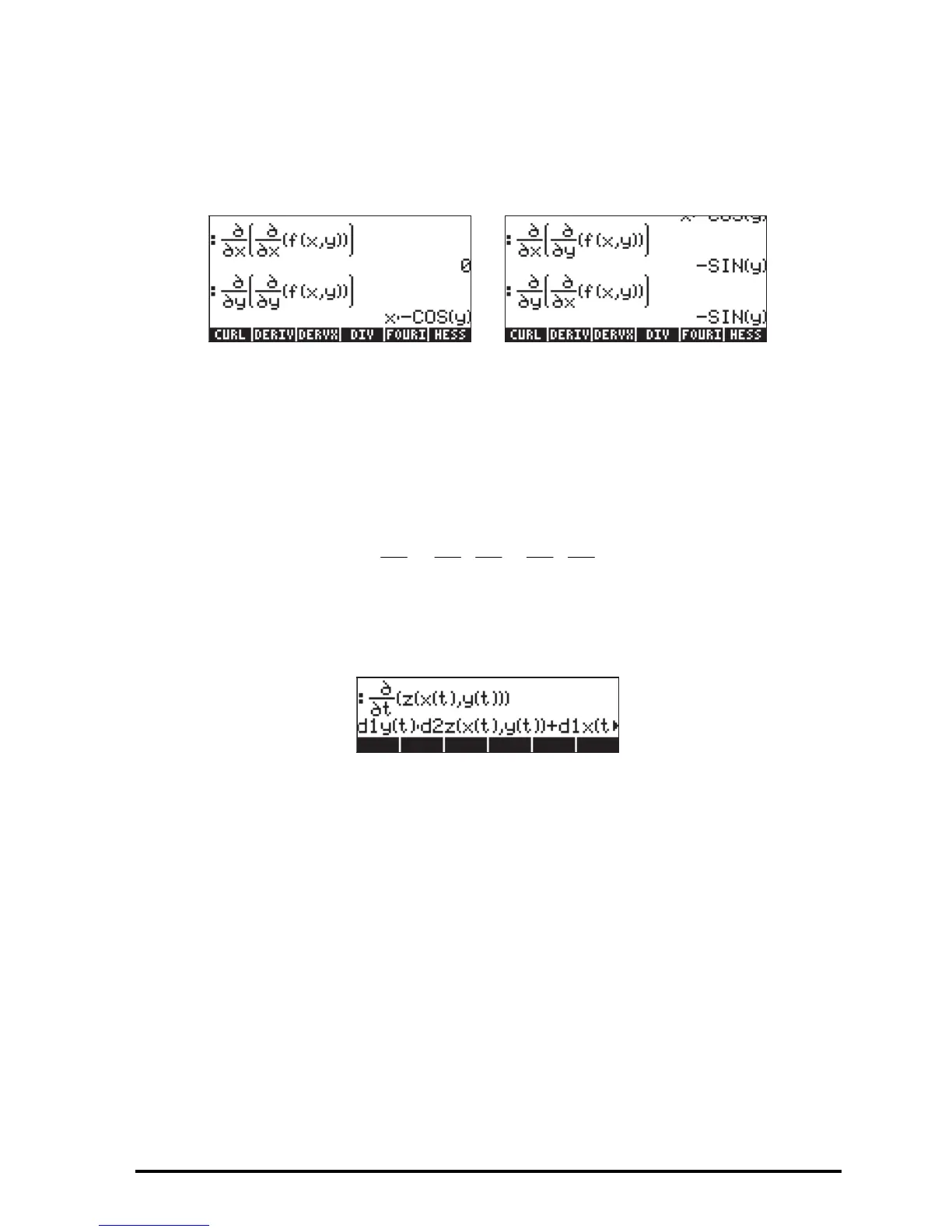Page 14-4
Third-, fourth-, and higher order derivatives are defined in a similar manner.
To calculate higher order derivatives in the calculator, simply repeat the
derivative function as many times as needed. Some examples are shown
below:
The chain rule for partial derivatives
Consider the function z = f(x,y), such that x = x(t), y = y(t). The function z
actually represents a composite function of t if we write it as z = f[x(t),y(t)]. The
chain rule for the derivative dz/dt for this case is written as
To see the expression that the calculator produces for this version of the chain
rule use:
The result is given by d1y(t)⋅d2z(x(t),y(t))+d1x(t)⋅d1z(x(y),y(t)). The term d1y(t)
is to be interpreted as “the derivative of y(t) with respect to the 1
st
independent
variable, i.e., t”, or d1y(t) = dy/dt. Similarly, d1x(t) = dx/dt. On the other
hand, d1z(x(t),y(t)) means “the first derivative of z(x,y) with respect to the first
independent variable, i.e., x”, or d1z(x(t),y(t)) = ∂z/∂x. Similarly, d2z(x(t),y(t))
= ∂z/∂y. Thus, the expression above is to be interpreted as:
dz/dt = (dy/dt)
⋅(∂z/∂y) + (dx/dt)⋅(∂z/∂x).
v
y
y
z
v
x
x
z
v
z
∂
∂
⋅
∂
∂
+
∂
∂
⋅
∂
∂
=
∂
∂

